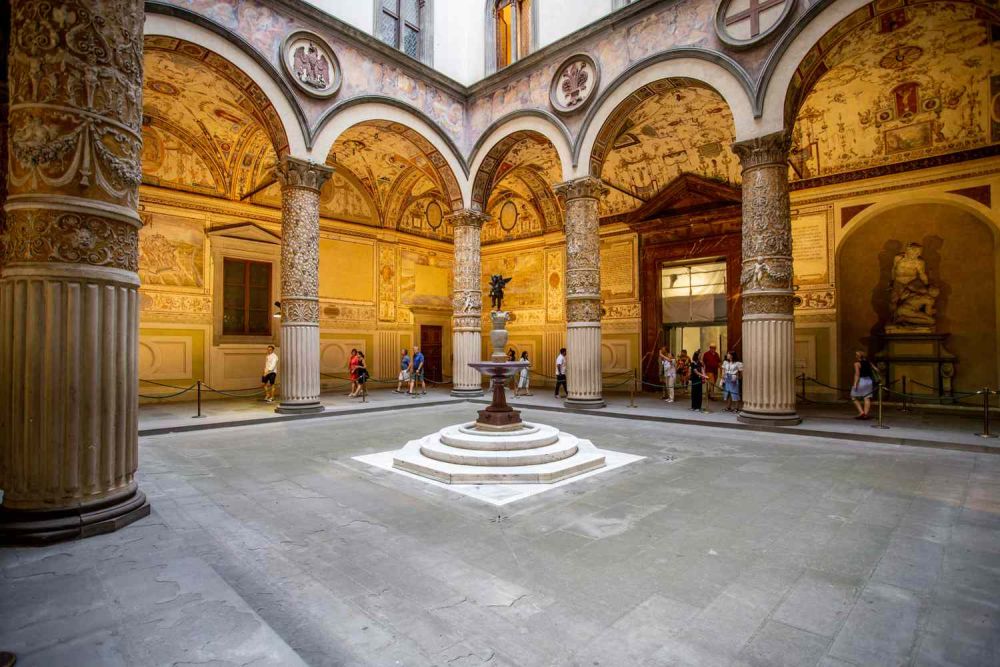

Palazzo Vecchio, the town hall of Florence, Italy, stands as one of the most significant administrative buildings in the historic center of Florence. This medieval fortress-palace has been the symbol of the political life in Florence for centuries. Its history as a tourism destination is closely linked with the history of Florence as the cradle of the Renaissance.
While Palazzo Vecchio itself was built at the turn of the 14th century, it wasn't until the late 19th century that tourism in Florence began to take shape. The city's art, architecture, and its connection to the Renaissance made it a key stop on the "Grand Tour," a cultural pilgrimage undertaken by wealthy Europeans and Americans. Visitors of the time would have been awestruck by the Palazzo Vecchio's imposing structure and the iconic Arnolfo tower.
The 20th century saw a significant change in tourism as it became accessible to a wider population. After World War II, there was a significant increase in international travel, and Florence, with its rich artistic heritage, became a primary destination for tourists from around the globe. Palazzo Vecchio, housing stunning artworks and opulent chambers, became a must-visit location for those interested in the cultural and political history of Florence.
In recent years, the focus of tourism in Florence, and at Palazzo Vecchio in particular, has shifted towards immersive cultural experiences. Interactive tours, multimedia exhibits, and thematic events are now common, aiming to engage visitors and provide deeper insights into the history and significance of the site.
Nowadays, sustainable tourism has also become an essential part of Palazzo Vecchio's appeal. Efforts to preserve the integrity of the site while providing access to a broader audience have been implemented. Furthermore, the role of technology has increased, with virtual tours and online repositories of art and historical documents becoming popular, especially in the wake of the global pandemic that restricted travel.
As Florence looks ahead, Palazzo Vecchio remains at the heart of its tourism industry. Balancing the preservation of its rich history with the demands of modern tourism continues to be a priority. New trends such as responsible travel and the integration of digital tools are shaping the future of tourism here, ensuring that Palazzo Vecchio remains a jewel in the crown of Florence's tourist attractions.